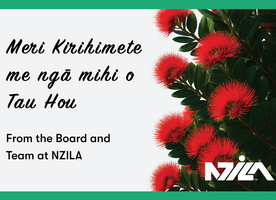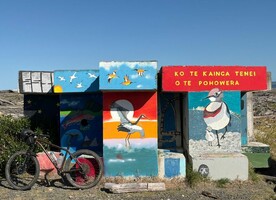News
Pride on Skin - Moko and Landscape
Posted 26 03 2020
in News

Na Te Tau-a-Nuku, Ko Neil Challenger i tuhi
As it did to many things in the Māori world, colonisation killed moko (Māori tattooing) – well nearly anyway. Historically Māori of status wore moko, the men primarily on their faces, thighs and buttocks and the women on their chin and foreheads. Of which Captain Cook wrote “…many…old and some middle aged men … have their face mark’d or tattow’d….with great nicety and judgment…”1. However, the last full facial moko was done only 100 years after Cook’s visit, and by 1896 moko was said to be “fast vanishing”2. Women’s chin moko, called kauae or moko kauae, lasted quite a bit longer; but in their haunting and important 1972 album of photos of women with moko kauae (all of them elderly, some over 100 years old), Michael King and Marti Friedlander said moko had ‘died’, by which they meant moko kauae were no longer being done. In slightly less than 200 years moko had become little more than a memory, preserved in carvings, paintings and the likes of Friedlander’s misty photos so evocative of times gone by.
But of course moko didn’t die. Twenty six years after King and Friedlander wrote moko’s obituary, Māori band Moana and the Moahunters began singing about Māori “…wearing their pride on their skin.” (https://www.youtube.com/watch? v=R5x-XsVwJOQ). Words written at a time when the skin was one of the few places Māori were able to be Māori, and when moko were again being seen, albeit they were still a novelty. Fast forwarding to 2020, and my google search of ‘moko’ just returned a staggering 22,700,000 hits, and, if we were not all confined inside by the covid-19 virus, there would be a fair chance of seeing someone with a facial moko on a walk down many of Aotearoa’s mainstreets - Ōtautahi to Ōtāhuhu,. In twenty-five years the artform has gone from being little more than a memory, to being very much alive. It is one of the benificiaries of the ‘Māori renaissance’ which has seen Māori (with the help of their supporters) bootstrap their way towards cultural self-expression, bringing back what colonisation took away.
In 2018 Te Tau-a-Nuku member Dr Diane Menzies (Ngāti Rongowhakaata/Te Aitanga o Māhaki) got her moko kauae, soon after she was inducted into the Kāhui Whētu (constellation of elders) of Ngā Aho. The two things went together. Unlike a late night tattoo in the back streets of Denpasar, a moko requires community and whānau endorsement. Di had been thinking about getting a moko for some time; she had discussed it with elders at Te Noho Kotahitanga marae, but joining the Kāhui Whētu was the affirmation that she needed to confirm her right to wear the moko.
Moko involves blood and the kauae is on the head and so is tapu, and consequently the kauae ceremony was carried out in the wharenui at Te Noho Kotahitanga marae. Eight women got their kauae at the same time in an all day event with powhiri and the moko process tied together with whānau and friends - including Di’s children, grandchildren and brother. The moko kauae were done by ta moko Joni Brooking (Ngāti Rongowhakaata/Ngāti Kahungunu/Ngāti Porou) to the accompaniment of waiata, mōteatea, chanting and karakia. As might be expected, Di’s kauae is an expression of her whānau, iwi, land and history.
The response to Di’s kauae has been mixed. One American friend said she was pleased to see that Di had “come out”. Some school friends asked “what she had done to her face” and “is it permanent?” Māori frequently now address her as whaea (aunty) when they see her. For Di it is an affirmation of her place in te ao Māori (the Māori world) and in the cultural dialogue that now more than ever is such an important part of her life.
This story of Di’s kauae is both significant in its own right as a record of an important step in her life, and in a broader sense as a story of design and design process that has potential application in the landscape. Moko are an adornment, an exciting reminder of kaupapa Māori and an undoubted statement of commitment to kaupapa. But in form and process they could also be on the same page as the landscape and the work of Landscape Architects. Not only are the forms of moko potential inspiration for Landscape Architecture, but equally importantly they contain concepts that link site to place and to people. As such they are both a reminder of the need for local narrative and in one form or another are inspiration for doing so - with the potential, in a different format, to add to the conceptual values of the landscape. Moko are not, however, ‘cultural doilies’ to pick up and use for decorative purposes, nor are they random or free of cultural entrainments. Moko belong to their wearer and on-skin moko designs are not in the collective commons. While at the same time (and as with so many things in te ao Māori), the whānau and community are involved, permissions have to be invoked, and there are processes to follow. But when they are followed the results are often beautiful, rich and meaningful, uniting place, people, iwi and person, be it on the person or the in the landscape.
One of the things that we need to do as Landscape Architects is to give voice to Aotearoa and to its whenua (land), grounding our work in this place rather than any other. Moko may be part of this, and as design, process, meaning and inspiration moko are potentially part of the Landscape Architectural tool kit. Only time and application will tell if this is really the case, but it is clear to me that when our work shapes the landscape it is Aotearoa that should be inscribed onto its skin, just as beautifully as Di wears her moko kauae on hers.
He mihi nui ki a ta tātau whaea o te kauae tehe; kia ora mo tau awhina mo tenei pito kōrero.
Ko tenei te wa o te Covid-19, no reira kia haumaru ta koutou noho aku hoa mā.
Neil Challenger (Ngāti Pākehā) is a practicing Landscape Architect, a member of Te Tau-a-Nuku (of which he is Kaituhi/Secretary) and a Kaupapa Whānau member of Ngā Aho, the collective of Māori Design Professionals of which Te Tau-a-Nuku-a-Nuku is a part.
1 Te Awekotuku N, (2007), Mau Moko, the world of Māori Tattoo, Viking Group/Penguin, Auckland, pg 43
2 Robley Mjr Gen, (1896), Moko or Māori Tattooing, London: Chapman and Hall
19 Dec
Christmas break 2025

see you from 12 January
As we wrap up another big year, we’re taking a moment to pause, breathe, and enjoy a well-earned break. Meri …
18 Dec
President’s update

December 2025
Earlier this month I attended the Ngā Aho Māori Design Professionals Wānanga-ā-Tau at Te Aranga Marae in Flaxmere. Tuia Pito …
18 Dec
Awards 2026 update

An update as we warm up for the 2026 Awards kaupapa. Submissions will open in March and will run for …
Events calendar
Full 2025 calendar